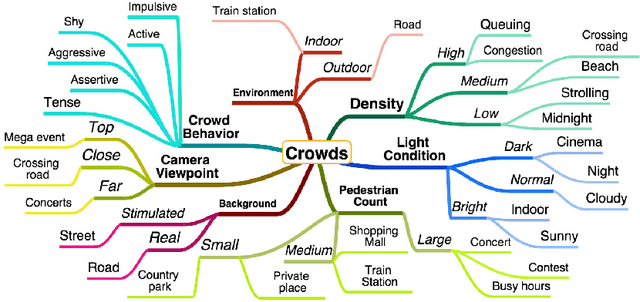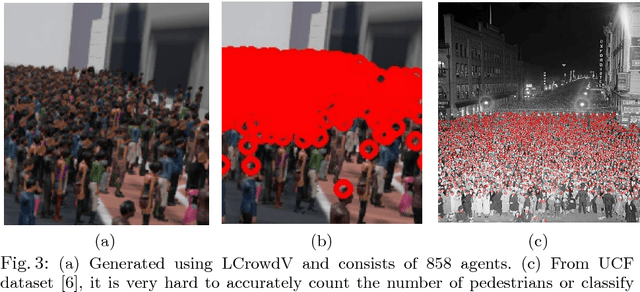Tsan Kwong Wong
MixedPeds: Pedestrian Detection in Unannotated Videos using Synthetically Generated Human-agents for Training
Nov 11, 2017



Abstract:We present a new method for training pedestrian detectors on an unannotated set of images. We produce a mixed reality dataset that is composed of real-world background images and synthetically generated static human-agents. Our approach is general, robust, and makes no other assumptions about the unannotated dataset regarding the number or location of pedestrians. We automatically extract from the dataset: i) the vanishing point to calibrate the virtual camera, and ii) the pedestrians' scales to generate a Spawn Probability Map, which is a novel concept that guides our algorithm to place the pedestrians at appropriate locations. After putting synthetic human-agents in the unannotated images, we use these augmented images to train a Pedestrian Detector, with the annotations generated along with the synthetic agents. We conducted our experiments using Faster R-CNN by comparing the detection results on the unannotated dataset performed by the detector trained using our approach and detectors trained with other manually labeled datasets. We showed that our approach improves the average precision by 5-13% over these detectors.
LCrowdV: Generating Labeled Videos for Simulation-based Crowd Behavior Learning
Jul 04, 2016



Abstract:We present a novel procedural framework to generate an arbitrary number of labeled crowd videos (LCrowdV). The resulting crowd video datasets are used to design accurate algorithms or training models for crowded scene understanding. Our overall approach is composed of two components: a procedural simulation framework for generating crowd movements and behaviors, and a procedural rendering framework to generate different videos or images. Each video or image is automatically labeled based on the environment, number of pedestrians, density, behavior, flow, lighting conditions, viewpoint, noise, etc. Furthermore, we can increase the realism by combining synthetically-generated behaviors with real-world background videos. We demonstrate the benefits of LCrowdV over prior lableled crowd datasets by improving the accuracy of pedestrian detection and crowd behavior classification algorithms. LCrowdV would be released on the WWW.
 Add to Chrome
Add to Chrome Add to Firefox
Add to Firefox Add to Edge
Add to Edge